- Home
- Alistair Moffat
The Secret History of Here Page 2
The Secret History of Here Read online
Page 2
I decided to keep a daily diary. Not just an aide-memoire of events, it would also record changes in the weather, the shift of the seasons, the growth, life and death of plants and animals, and what I felt and thought about what I saw unfurl through the year. It would also be a diary of discovery. Instead of wondering about the story of the Deer Park, a low hill that dominates the north of our farm, I would use all my experience as a historian to attach some facts to vague suppositions. Instead of wondering about the transit of the constellations across the night sky, I would discover how they were understood in the calendars of the deep past, a time before a modern understanding of time. Raised in the late-Victorian countryside, my grandmother told me once that she could find her way home through the winter darkness by starlight. Was that true?
When a house was built on the farm for my son and his family, the digger broke into an old stone drain. It had been beautifully made. Before the era of factory-made ceramic and then plastic pipes, skilled and hardy gangs of men had dug long trenches across the field behind the new house, laid a course of rounded river pebbles and then larger, flatter stones on top. It was slow, back-breaking work and I was vexed to see it smashed by the bucket of the digger, but after it rains water still trickles out of it. Who made these beautiful drains, and when?
Everyone lives in the midst of history. Cities and towns are constantly changing, their buildings replaced, roads re-routed and horizons re-formed. Where there is demolition, when an office block or an old building past its time is removed, like a tooth extraction, what the muddy, messy gap reveals is history. All towns and cities are other palimpsests, their present piled directly on top of the past, hiding stories, layers of centuries, but not obliterating all that experience in one place. Street names remember ancient purposes, a time before the internal combustion engine, supermarkets, electricity: Horsemarket, Poultry, Potterow, Nunnery Lane and innumerable Castle Streets, Abbey Streets and Quay Streets. All that is needed to convert these noisy, busy places into rich narratives is curiosity. City streets are not too dead for dreaming.
Having left Edinburgh more than twenty years ago to come with my family to live in the countryside, I took some time before I began to think about the land I walked through, its trees, plants and animals, and all of those people who walked our fields and tracks before me. But when I did, it turned out to be the beginning of an intimate and loving relationship. What I discovered fired my imagination and made the small world I inhabit enormous, a place from where I could reach back through time, across millennia, so that I could take the hand of those who lived where we live eight thousand years ago. They saw the same skies I see. They were once me and I am them.
What follows is the story of my year, but at the same time it could be any year and all years. Every place has its history, its secrets, and all that is needed to unlock and learn them is love, patience and open eyes. It is, of course, arranged into days, weeks and months, but although dates are attached, no year is. The seasons change, the winds blow, the rain falls and the sun shines, but cracks in time will continually open as the past slips through and onto the pages of the present.
January
1 January
Six hours after the year’s midnight, the light of a waning crescent moon glints off the ice on the track down to the stable yard. Out early with the dogs to let them pee, we walk under an open sky glittering with starlight. Appropriately, the brightest is Sirius, the Dog Star. It shines in the southern sky long after the others have faded. Even though sunrise is more than two hours away, the eastern horizon is blue and will soon glow pale yellow. The dawn of the new year will bring sun, hope and welcome warmth.
The world is slow to wake after what we used to call Auld Year’s Night in the Scotland I grew up in. Better than New Year’s Eve, it reflected the year’s turn, the Janus-like moment of farewell to the darkness of the old before the dawn of the new. It was a time of licensed excess, when even respectable people could take a dram or two, or three, before the bells rang out and hands were shaken, wishes made and kisses given. Those overcome by too much cheer were said to have foundered, like ships ploughing through the waves before running aground, as they made their deliberate, unsteady way to bed.
When Maidie and I reached the top of the Long Track, we looked out over our little valley and saw that it was still fast asleep. Three miles away, on a shoulder of the western hills, not far from the old Roman fort at Oakwood, the farmhouse commands a sweeping vista, looking back at us in the east. Here the Hartwoodburn begins to carve out the shape of the valley as it rises near the foot of the Long Track before forking around the wide, billiard-table-flat grass park known as the Tile Field. Only the distant lights of the kitchen windows in the hamlet of Hartwoodburn were twinkling, eight houses and a farm steading strung out along a single-track C road. On the other side of the Tile Field, on the south-facing slope below the northern ridge that fringes the valley, is our little farm, the Henhouse, and its outhouses and stables, sheltered by trees. Out to the west, the Hartwoodburn is joined by other streams flowing down off the hills before it tumbles over a waterfall called the Motte Linn and then spills into the River Ettrick.
I should pause here for a moment of definition. I have written above that we live on a small farm in the Scottish Borders, but I am not absolutely sure that we do. It is difficult to know what to call the bit of the planet we own and look after. At eighty acres, it is bigger than a smallholding or a croft – I would wince if anyone called it an estate – but it seems too small to be a farm. We do not grow any crops except grass and my wife manages about twenty-five acres of pasture to breed horses. So, I guess small farm is the least inaccurate description.
The drams of Auld Year’s Night having kept many in their beds, Maidie and I walk through a silent landscape where little stirs. No car headlights swing up the Thief Road into the western hills or sweep down through the trees from Greenhill Heights. Across at Hartwoodburn Farm, where more than a hundred head of cattle are in their winter byres, it is quiet. By 7 a.m. the farmer is usually busy clattering around with his digger, lifting silage out of his pits and into the mangers for the morning feed as the cows trumpet their joy, steam rising into the cold air from the fermenting forage. But he is late and the hungry cows wait quietly.
Lindsay and I celebrated Auld Year’s Night with some good wine and trusted that the New Year would safely come in without our help. With our son, his wife and our granddaughter Grace living on the farm, as well as our daughter, Beth, and her husband visiting, Christmas is much loved and much preferred as a family festival. But it was not always so in Scotland. Not until 1958 was Christmas made a public holiday; the focus was traditionally on New Year. I can remember my dad going to work when Christmas fell on a weekday. Early in the morning, before he left the house in his overalls, we were given one or two presents and a stocking with a tangerine, half a crown and some sweets, usually Toblerone, which I never liked. When Dad came home from work, we had roast chicken, a real treat. It was television that changed attitudes. Before the changes of the late 1950s we used to watch England having a party and Scotland seemed not to be invited.
2 January
All that disturbs the quiet of the early dark is the rustle of Maidie’s paws as she stalks through the crisp and frosted grass, sniffing after the night trails of voles and mice. I pad up the track behind her and then turn to look east for the first glimmers of morning. The Christmas and New Year holidays are the only time of the year when no one is sure what day it is. The rituals of meals, gifts, toasts, daytime television and long walks are what give structure and not the calendar and the weekly round. It is as though ordinary time is suspended. Most significant for us is the passing of the solstice and the longest night. Very slowly the days begin to stretch and, while the worst of the winter is still to come, the light is returning.
At Windy Gates, at the top of the Long Track, the vistas in all directions are wider than they were last winter. A dense sitka spruce and Scots pine
wood that belonged to my neighbour stood above the Top Track and last July huge machinery rumbled around it to begin a savage process. Like a dinosaur in the primeval forest, the harvester’s saw swung on the end of an extending arm – it could fell a tall tree in less than five seconds. The scruffy sitka had been planted in 1950 and needed to come down before they were all blown down, but I was vexed to the point of tears to see the loss of the Scots pines. They marched along our track to make an avenue with the birches and geans we planted on the opposite side and they sheltered our home paddocks from the bitter north winds. Majestic, red-barked and with deep forest-green needles, those trees were my friends and I miss them.
The land changes but it never ceases to dream of the past: primitive, spiky marsh grass reclaims boggy fields, springs insist on avoiding drains and bubble up through the stones of my tracks, and the unchanging, eternal wind blows on, whistling, filling the air with the sound of history. Last September, when the trees were still in leaf, a storm burst on us and the two old sycamores left by the harvester (the felling licence was for pine only) suffered terribly, with half of their main limbs torn off. Yesterday afternoon, my son and I cut some into manageable lengths and stacked them in the wood yard to season. The heartwood was milky white and the rings so close as to be uncountable. I am glad to have the hardwood logs for our woodburners, but sad at the destruction.
The densely ranked woods of the commercial forestry planted since the Second World War are sterile, dark places where the deer find cover, but little else, plant or animal, can thrive. The regiments of sitka spruce mask the shape of the land and blank off vast areas so completely that they can seem invisible. The loss of the Scots pines by the Top Track was partly compensated by the opening up of the northern ridge. From a new vantage point, I was better able to see how our little valley might have looked to those who walked their lives here before us.
The past of this place fascinated two men I wish I had known. Bruce and Walter Mason were bakers in Selkirk, our nearest town, and since the 1920s they had been field walking in and around our valley. After spring ploughing, and ideally after a shower of heavy rain, the brothers quartered fields to see what the plough had turned up. Sometimes they picked up valuable objects glinting on the top of the rain-washed furrows: a Roman enamel brooch, silver coins and other items. But most eloquent were the flints collected by the Masons. Some came from the fields of our farm, and their discovery and dating radically shifted my sense of this place. The flint arrowheads and spear tips described a very different landscape. Ten thousand years ago the flat Tile Field was a lake, a small loch, and it seems that family bands of hunter-gatherers may have sometimes overwintered around its margins.
The gossamer traces of their shelters have long since fled. Built from the boughs or trunks of trees and floored with rushes from the lochside, these structures were entirely organic and will have melted back into the soil they came from. The south-facing bank of the shallow loch was a good place to wait out the storms, frosts and rains of the winter. On calm days fish and eels could be caught and the wildfowl that nested along the damp, reedy shore could be netted and their eggs collected in the spring. Many hunter-gatherer bands harvested hazelnuts in the autumn, roasted them and ground a paste that would keep through the hungry months. When summer came, the band who hunted around the Tile Field will have moved on to other ranges where seasonal prey ran and where the wild harvest was good.
Walter and Bruce Mason’s sharp eyes and vast knowledge lit the darkness of the past. By recognising these small, razor-sharp pieces of flint, and understanding their manufacture and their uses, they reached back across ten millennia and made all that experience in one place come alive. They knew that history is like an unmade jigsaw whose pieces lie scattered about us on every side.
3 January
A vixen shrieks. Even though she is deep in the wood, waiting for her mate to come to her, her shriek echoes around the little valley. A damp winter mist has settled on the surface of the loch, Hartwood Loch, its reedy fringes and watery willow scrub surrounded by the woods where the harts flit between the shadows, the wraiths of the Deer Wood.
The vixen’s piercing call stirs the sleeping family. On a bed of brackens and brittle leaves, a mother draws her son, daughter and their father closer. Though they wear buckskin tunics and pull pelts tight around them to keep out the shivering wind, their warmth comes from each other. They live their brief lives in the midst of wildness and know that the mating foxes present no threat. Set in a circle of flat hearthstones, the smoored fire is no more than dull and feeble embers, but with dry lichen and slender, barkless twigs, the mother leans over and blows the flames into life before carefully laying on more kindling. By the side of the Hartwood Loch a spiral of smoke rises in the morning sky.
The hunter-gatherer bands who sat and knapped the flints found by the Mason brothers were few. Between 8000 BC and 4500 BC the population of prehistoric Britain was likely tiny. Perhaps only ten thousand fished the lochs and rivers and hunted in the Wildwood, only one species of mammals amongst tens of thou-sands of bears, bison, lynxes and pine martens. What brought them north from the Ice Age refuges in the caves of southern Europe were the migrating herds. As the weather quickly warmed, wild horses, reindeer and other fauna failed to adapt fast enough; unable to shed their warm coats, they chased the cold northwards. Our ancestors were forced to follow them, so great was their dependence on their meat, pelts, sinews, hair and horns. But as the sun shone and the snow retreated to the highest mountains, the land came back to life after the millennia of ice, and the Wildwood, a temperate jungle browsed and sometimes opened up by grazing animals, carpeted the great river valleys of the Scottish Borders and reached high into the western hills. This wide area may have been home to about a hundred people, perhaps twenty or twenty-five family bands. Many of the animals of the Wildwood never saw a human being and, when they did, may not have fled before the flint-tipped spears were thrown or they were chased towards the camouflaged pits dug in forest paths.
My old friend Walter Elliot knew Bruce and Walter Mason well, and although they both are now long dead, he told me recently he still misses them. Shy and diffident men, they had walked the fields around Selkirk collecting all manner of objects, as well as papers related to the town’s history, for a simple reason. They were curious. Neither was formally educated, but they shared all the attributes of the supremely well self-educated, much rarer and greater prizes than a piece of academic paper. Walter shares those singular virtues and I shall be eternally grateful to all three men for their patient work and keen observation. They have made my life in this place richer.
The vixen shrieked in the sitka spruce wood near Windy Gates when I walked out in the early dark with Maidie. Known as the Young Wood, it was planted twenty years ago after its exact replica had been harvested and carted off to the sawmill. Her mating call was only a distant echo of a wildness long vanished. Much more often the morning air carries the bleat of sheep on the western hillsides or the murmur of cattle feeding in the byre. As I made my way back to the farmhouse, I saw the lights of the shepherd’s quad bike as he rode up the southern ridge to check on his ewes.
We have tamed the planet and only the elemental wildness of the oceans and the weather remain. Savage storms can destroy in moments, while long sunny evenings can send us to bed content with creation. These forces govern all.
4 January
This morning the world was stirring at last, going back to work after the holidays. Out in the early dark, amongst the ice-white scintillae of the stars, I saw the green and red port and starboard lights of five aircraft, four flying north-west to Glasgow and one due north to Edinburgh. Car headlights breasted Greenhill Heights, others threaded their way down the Ettrick Valley and, on the C road, the flashing orange lights of the refuse lorry beginning its country run, stopping at the houses in the hamlet of Hartwoodburn. At a tight bend in the single-track road, it met the farmer and his digger on their way to feed the cows in
the byres. He had to reverse a long way to find a passing place to ease the traffic jam.
As the morning light brightened, the crows roosting in the woods by the Deer Park lifted into the air. More a dawn cacophony than a chorus, four or five hundred flocked and flew south over the Tile Field. Some landed near the Long Track and began strutting through the grass, their black chests thrust out, searching the ground for morsels. There are far too many of them. If they were the size of buzzards, crows would be terrifying rather than merely annoying. Elsewhere in the sky, there was pleasing contrast. Honking gently, fourteen geese, strung out in a breaking, re-forming arrowhead, flew south-east towards the morning sun.

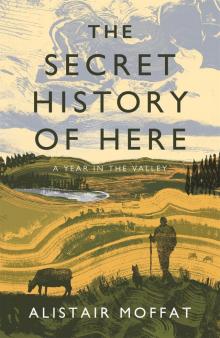 The Secret History of Here
The Secret History of Here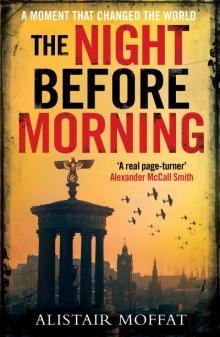 The Night Before Morning
The Night Before Morning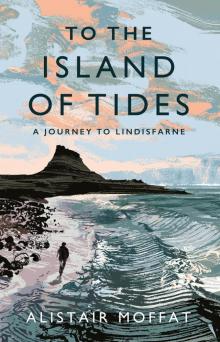 To the Island of Tides
To the Island of Tides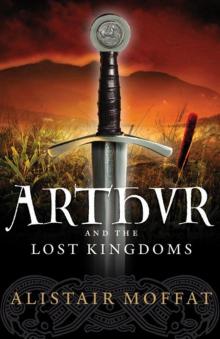 Arthur and the Lost Kingdoms
Arthur and the Lost Kingdoms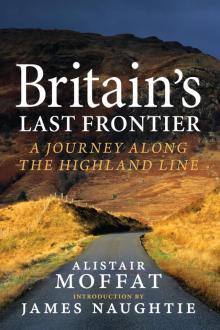 Britain’s Last Frontier
Britain’s Last Frontier The Faded Map: The Lost Kingdoms of Scotland
The Faded Map: The Lost Kingdoms of Scotland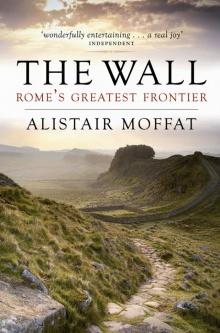 The Wall
The Wall